What is Building Information Modeling (BIM)?
Building Information Modeling (BIM) is the new buzzword in Architectural, Engineering and Construction (AEC) industry as it providing the best of technology, accuracy and comfort which has yearned by this fragmented industry for a long time. The reason for the growing popularity of this 3D architectural modeling is the amount of benefits it gives to respective users. Starts from realistic 3D images to scheduling, estimation, risk analysis, successful collaborative projects to effective facility management, BIM services offer A-Z of a professional mega construction project. BIM construction Detailing is very easy on the participant of the construction project as due to greater expanse and clarity, participated parties have better understanding and analysis of the design. This clarity and understanding guarantees its accuracy and completeness to the clients who are floating with positive reviews about BIM. Along with mentioned facilities BIM is very useful in evaluating the terms of costing and other parameters.
Along with an expensive technology Building Information Modeling is complete process which started before the construction and runs throughout the life-cycle of building. It is a process because it applies to every aspect of construction project namely design, estimation, supply chain, delivery of goods, building process, allocation of resources, meeting the productivity demands and asset management at post-construction phase. BIM is carried out through various levels spans from level 1 to level 3 along with the information of various aspects from 4D to 7D.
- Level 1 : Usage of 2D and 3D models with file based collaboration.
- Level 2 : File based collaboration with library management
- Level 3 : IBIM, Integration and Interoperability of data and process, common dictionaries and lifestyle management
The level 2 is rarely utilized. Further on it is divided into A and B. There following information aspect of BIM denotes by “D”.
- 4D: It deals with the scheduling of information. It enables the efficient transportation of materials at the construction site on allotted time. Due 4D there is a relative decrease in the issues of storage as materials are immediately installed in a minute it delivered.
- 5D: 5D takes care of the cost estimation of project. Every part of the construction project comes have its cost. These costs are analyzed in order to set the total budget as it enables the expectation of how much needs to be spend in allotted time to meet the construction target.
- 6D: Here at 6D sustainability targets are achieved including the appropriate energy usage, sustainability from material, comprehending the point of view of management and follow the trail of Leadership in Energy and Environmental Design (LEED).
- 7D: It is the part employed after the construction as here comes the Facilities Management (FM) and Asset Management (AM). 7D is used at handover process while handing the finished project to its owner. It is one of the fundamental parts in calculating the ROI. This level of BIM is performed with the assurance of efficient identification for the parts of building as every part has a lifespan and 7D can be utilized efficiently while replacing those parts.
Thus, this is how the process of Building Information Modeling is proceeds that start from the selection of design and construction team to efficient delivery of completed allotted infrastructure to the owner.
Silicon Valley is an India based company specialized in CAD based services providing its services at International market along with national horizon. Our team of expert professionals is well-trained and skilled to tackle each and every complexity comes in their way at the time of functioning. Every given project completes within the given deadline. The services offers by Silicon Valley are civil engineering services, structural engineering services, electrical engineering services, mechanical engineering services, HVAC services, Walkthrough and Animation, Cladding ,plumbing/piping services, Building Information Modeling and Architectural Services.
You may also like
- BIM Guidelines for Contractors
- Use of BIM in Planning Process
- BIM from design to construction
- Major benfits of BIM
- BIM Construction Industry
- Benefits Construction Manager
- Adopting BIM in Construction
- Advantages & Disadvantages
- Leading Top Countries Adopting BIM Outsourcing Services
- Implementation of BIM Services
- BIM Dimensions
- Sheet Metal Design
- What is Shop Drawing?
- Design and Project Management
- Construction firms in delivery
- What is Steel Detailing?
- Rebar Detailing Implementation
- Construction & Rebar Detailing
- Why Rebar Detailing
- Corrosion Steel Detailing
- Importance Steel Detailing Eng
- Structural Steel Detailing
- Lachlan's Line Pedestrian Bridge
- General Factors to consider during Rebar Detailing implementation process
- MEP Shop Drawings
- Major Benefits of Outsourcing MEP Designs for Construction Projects
- What is the right method to get precast concrete shop drawings with an outsourcing company?
- Why outsourcing MEP BIM Modeling Services is a good idea with Revit software?
- Outsourcing Precast Panel Detailing Services - Biggest Advantage in the Construction Industry
- What are the Core Roles and Responsibilities of a Construction Supervisor in a Rebar Concrete Construction project ?
- How Does Building Information Modeling(BIM) Help In Reducing Construction Costs ?
- How does MEP BIM Coordination help AEC Contractors in Construction Process?
- What is the difference between Shop Drawings and Issued For Construction (IFC) Drawings?
- What are some Manual Techniques and Computer Processes to create Shop Drawings?
- Everything to know about LOD in BIM
- Concrete Structure Designing Industrial Projects
- The Ultimate Guide to Hire Precast Detailing and Shop Drawing Service Provider.
- How to reduce construction costs by adopting Innovative Structural Design and Drafting Solutions?

